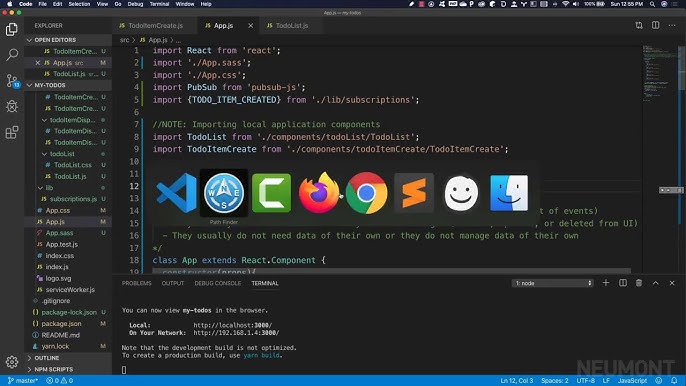In the ever-accelerating world of technology, trends may shift and frameworks may rise and fall, but one discipline remains a timeless and essential pillar of software engineering: debugging. The process of finding and fixing errors is not an arcane art but a systematic science that separates novice coders from seasoned professionals. Effective Software Debugging is the critical bridge between code that is written and code that works reliably. This guide serves as a comprehensive exploration of the fundamental principles, modern tools, and advanced strategies that empower developers to tackle bugs with confidence and precision. We will journey through the full stack, from client-side JavaScript Debugging to complex Backend Debugging in Node.js and Python, equipping you with the knowledge to build more robust and resilient applications.
The Art and Science of Bug Fixing: Foundational Principles
Before diving into specific tools or languages, it’s crucial to adopt a strategic mindset. Rushing to change code without understanding the problem is a recipe for frustration and more bugs. The most effective Debugging Techniques are rooted in a methodical approach that prioritizes understanding over guesswork. This foundational layer of discipline will dramatically improve your efficiency in Bug Fixing.
Step 1: Reproduce the Bug Consistently
A bug you can’t reproduce is a bug you can’t fix. The first and most critical step is to find a reliable sequence of actions that triggers the error every time. This involves understanding the context: What was the user’s input? What was the state of the application? Which browser or environment was used? Document these steps. A reproducible bug provides a controlled environment for testing your hypotheses and verifying your fix. Without it, you are merely navigating in the dark.
Step 2: Understand the Error and Form a Hypothesis
Once you can reproduce the bug, your next task is to gather evidence. This starts with analyzing the Error Messages and Stack Traces. A stack trace is a map of the function calls that led to the error, showing you the exact line where the program failed. Don’t just look at the last line; read the entire trace to understand the execution flow. Based on this evidence, form a clear hypothesis. For example: “I believe the error occurs because the `user` object is `null` when passed to the `calculatePermissions` function, likely due to an asynchronous timing issue in fetching user data.” This hypothesis gives your investigation direction.
Step 3: Isolate the Problem (Divide and Conquer)
Modern applications are complex systems of interconnected components. The “divide and conquer” strategy is about systematically narrowing down the source of the problem. You can do this by:
- Commenting out code: Temporarily disable sections of code to see if the bug disappears. If it does, you know the problem lies within that block.
- Using hardcoded values: Replace a dynamic variable from a database or API call with a static, known-good value. If the bug is resolved, the issue is with the data source, not the logic processing it.
- Binary search: In a long function or sequence of operations, add a log statement or breakpoint halfway through. If the state is correct at that point, the problem is in the second half; otherwise, it’s in the first. This is a powerful method for efficient Code Debugging.
Mastering Your Arsenal: Essential Debug Tools and Techniques
A solid methodology is powerful, but it’s amplified by a mastery of modern Debug Tools. Every developer has a suite of tools available, from browser-integrated utilities to command-line debuggers. Knowing how to wield them effectively is non-negotiable for efficient Application Debugging.

Frontend and Browser Debugging with Chrome DevTools
For any form of Web Debugging, Chrome DevTools (or similar tools in Firefox and Edge) is an indispensable powerhouse. It’s far more than a simple Debug Console.
- The Console: Beyond `console.log()`, learn to use `console.table()` for displaying arrays of objects in a clean format, `console.dir()` for inspecting object properties, and `console.trace()` to see the call stack leading to a log. This is the heart of interactive Frontend Debugging.
- The Sources Panel: This is where you perform interactive debugging. You can set breakpoints to pause code execution at specific lines. Once paused, you can inspect the value of all variables in scope, step through the code line-by-line (step over, step into, step out), and even modify variables on the fly to test different scenarios. This is crucial for tackling complex JavaScript Errors.
- The Network Panel: Essential for Network Debugging and API Debugging. This panel records every network request your application makes. You can inspect request headers, payloads, and server responses. Is an API call failing with a 404? Is the JSON response malformed? The Network panel will tell you.
- The Performance and Memory Panels: For advanced issues, these panels are key. The Performance panel helps with Debug Performance by recording and visualizing your site’s runtime performance, identifying slow functions and rendering bottlenecks. The Memory panel is vital for Memory Debugging, helping you find and fix memory leaks that can crash your application over time.
Backend Debugging: Node.js and Python
Backend Debugging requires a different set of tools, as the code runs on a server, not in a browser.
Node.js Debugging
For Node.js Development, the built-in debugger is powerful. You can launch your application with the `–inspect` flag:
node --inspect index.jsThis starts a debugging server that you can connect to using Chrome DevTools via `chrome://inspect`. This provides the same rich debugging experience—breakpoints, call stack inspection, console access—that you have on the frontend, making it a cornerstone of Node.js Debugging. This is especially useful for Express Debugging, as you can place breakpoints inside your route handlers and middleware. Most modern IDEs, like VS Code, have excellent built-in debuggers that simplify this process even further, providing a seamless experience for tackling Node.js Errors and complex Async Debugging challenges.
Python Debugging
In the world of Python Development, the built-in `pdb` (Python Debugger) module is a go-to tool for command-line debugging. You can insert a breakpoint anywhere in your code with a single line:
import pdb; pdb.set_trace()When the interpreter hits this line, it will pause execution and drop you into an interactive debugging console. From there, you can inspect variables, execute code, and step through the program. For developers working with frameworks like Django or Flask, IDEs like PyCharm and VS Code offer sophisticated graphical debuggers that make Django Debugging and Flask Debugging much more intuitive.
Beyond the Basics: Advanced Strategies for Modern Development

As applications grow in complexity, so do the bugs. Debugging a simple script is one thing; debugging a distributed microservices architecture running in containers is another. This requires advancing beyond basic techniques.
Testing and Debugging: A Symbiotic Relationship
A robust testing strategy is one of the most effective forms of proactive debugging. Testing and Debugging are two sides of the same coin.
- Unit Test Debugging: When a small, isolated unit test fails, it points you directly to the function or method with the bug. Writing comprehensive tests forces you to consider edge cases, which often prevents bugs from ever being written.
- Integration Debugging: Integration tests check how different parts of your system work together. A failure here often signals issues with data contracts, API inconsistencies, or incorrect assumptions between services, which is common in Microservices Debugging.
Debugging in Complex Environments: Containers and CI/CD
Modern development often involves containers and automated pipelines, which introduce new layers of complexity.
- Docker Debugging: You can debug an application inside a running container by attaching your IDE’s debugger to it. You can also use `docker logs [container_id]` to view the application’s output or `docker exec -it [container_id] /bin/sh` to get a shell inside the container for live inspection.
- Kubernetes Debugging: Debugging in Kubernetes involves checking logs from pods (`kubectl logs [pod_name]`), describing resources to check for configuration errors (`kubectl describe pod [pod_name]`), and sometimes port-forwarding to connect a local debugger to a pod running in the cluster.
- CI/CD Debugging: When a build fails in a CI/CD pipeline, the key is to ensure your pipeline produces detailed logs and artifacts. These artifacts (e.g., test reports, build logs) are your primary evidence for diagnosing what went wrong in the automated environment.
Logging and Error Tracking for Production Debugging

You cannot attach a debugger to a live production server without impacting users. This is where Logging and Debugging become critical. Your application should generate structured logs (e.g., JSON format) with useful context like user IDs, request IDs, and timestamps. These logs can be sent to a centralized logging platform (like ELK Stack or Datadog) for analysis.
Furthermore, integrating an Error Tracking or Error Monitoring service (like Sentry, Bugsnag, or Rollbar) is essential for Production Debugging. These tools automatically capture unhandled exceptions in your application, group them, and provide you with full stack traces, browser/OS versions, and other context needed to fix bugs that only appear in the wild.
Framework-Specific Debugging Tips
While general principles apply everywhere, many popular frameworks have their own dedicated Debugging Frameworks and tools that can significantly speed up the process.
JavaScript Frameworks: React, Vue, and Angular
- React Debugging: The React DevTools browser extension is essential. It allows you to inspect the component hierarchy, view and modify component props and state in real-time, and profile component rendering performance to find bottlenecks.
- Vue Debugging: Similar to React, the Vue.js devtools extension provides a component inspector, state management inspection for Vuex, and event tracking, which is invaluable for understanding how your application state is changing.
- Angular Debugging: The Angular DevTools extension and the Augury extension are powerful tools for inspecting components and understanding the dependency injection system. Debugging change detection issues is a common challenge in Angular, and these tools help visualize the component tree and its state.
- TypeScript Debugging: When using TypeScript, ensure you have source maps enabled. Source maps create a link between your compiled JavaScript and the original TypeScript code, allowing you to set breakpoints and debug directly in your `.ts` files.
Conclusion: Cultivating a Debugging Mindset
While this guide has covered a wide array of Developer Tools and techniques, the most powerful tool of all is your own mind. Debugging Best Practices are ultimately about cultivating a mindset of curiosity, patience, and systematic problem-solving. Embrace the process of investigation. View each bug not as a frustrating roadblock but as a learning opportunity—a puzzle that will deepen your understanding of the system you are building. By combining a methodical approach with a mastery of modern tools like Chrome DevTools and language-specific debuggers, you can transform debugging from a dreaded chore into a satisfying and empowering part of the development lifecycle. This skill, more than any single framework or language, will define your effectiveness as an engineer.













